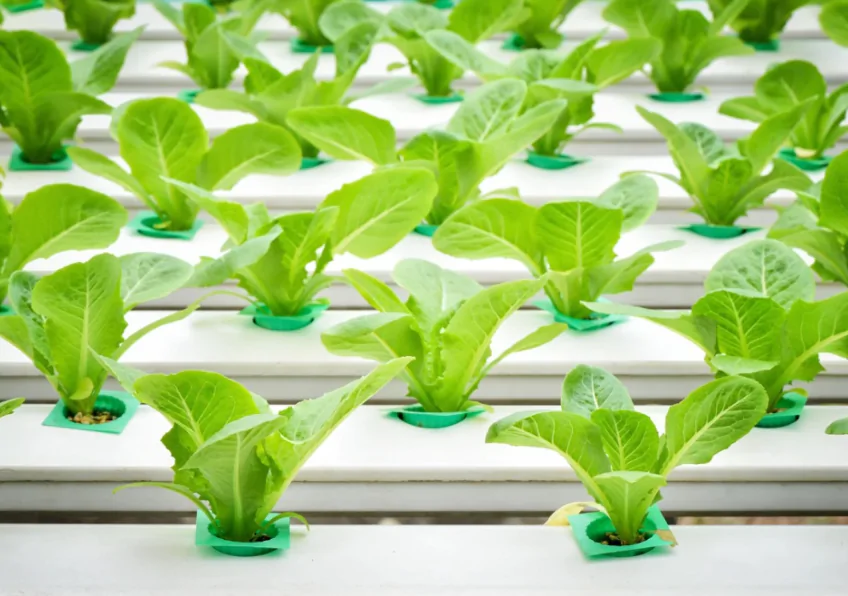Is Hydroponically effective in a Grow Tent?

It can’t be denied grow tent kits offer serious conveniences. Not only are they simple to set up, but they also give you a way to grow indoors without altering your home. Yet, while grow tents are immensely popular, we are still learning new ways to utilize them. Of particular interest is the question of whether you can grow hydroponically in a tent.
Can I Grow Hydroponically in a Tent?
While soil cultivation is very popular with tent growers, there isn’t much talk about growing hydroponically in these setups. Many assume that the additional equipment required for hydro will take up too much room in a tent. Similarly, large amounts of standing water in a confined space with electrical equipment could pose a safety hazard.
Nonetheless, with such diverse technologies on the market, we thought it would be interesting to research the topic of hydro tent-grown in more detail.
The Biggest Challenges of Hydro Tent Cultivation
The size constraints of grow tents can make them difficult for hydroponic cultivation. For starters, growers often prefer to design growrooms around specific-sized hydro tables. With the limited sizes of grow tents available, the ability to “build a room around a table” is lost.
All tent growers must deal with the challenge of fitting cultivation equipment into the tight confines of a tent. When it comes to hydroponic growing, the addition of tables, pumps, hoses, timers, and reservoirs can seem like an impossible task.
Because grow tent kits feature such tightly confined spaces, small environmental issues can quickly become big problems. Hydro components like nutrient reservoirs and irrigation pumps will only heighten heat and humidity levels in a tent grow.
Different Hydro System Options for Tent Growing
While size concerns for hydroponic tent cultivation are valid, taking a closer look at different hydro systems could uncover some opportunities for success.
Hydro Tables
Hydro tables are the most popular hydroponic setup on the market today. With these systems, plants are grown in substrates and baskets which are placed directly onto a table. A timer, pump, and hose system work together to flood the table periodically throughout the day.
Due to their size, hydro tables are not a good option for tent growing. Not only do they take up more square footage than is necessary per plant, but tables are virtually impossible to work around in grow tents. Finally, as hydro tables are incorporated with reservoirs, they pose problems with humidity levels in the tight confines of tents.
Dutch Buckets
Dutch buckets fuse container growing with either recirculating or drain-to-waste hydro systems. With Dutch buckets, you grow a single plant inside a pot filled with a cultivation substrate. Each pot features its own miniature reservoir/catchment system. When water is pumped to the individual pots, it drains out the bottoms and cycles through the rest of the system.
Dutch buckets are an intriguing option for hydro tent growing. Not only do they take up less square footage than tables, but they are also easily customizable. You can purchase different-sized Dutch buckets, as well as situate your plants in a fashion that makes them easy to work with.
Like hydro tables, Dutch buckets require a reservoir from which to pump nutrient-rich water. However, you can rig your Dutch bucket system with the main reservoir outside the tent. In doing so, you keep excess humidity out of the tent, while also reducing dangers with standing water and electricity. To help you on your way, AC Infinity makes grow tents with ports near the ground that can easily accommodate a Dutch bucket setup.
Soil Drip
Soil drip systems fuse traditional container growing with hydroponics. However, unlike hydro tables and Dutch buckets, soil drip systems do not circulate water away from the plants after they are watered. In essence, these setups pump water from a reservoir which is then directly “dripped” onto a plant’s root ball.
Soil drip systems are an intriguing option for hydroponic tent growing. You can get soil containers in nearly any size or shape, as well as arrange them in a fashion that makes sense in your tent. Even more, because these setups can be used as a supplement to hand watering, you can experiment with drip systems before you have to depend on them.
As seen with Dutch buckets, soil drip systems require a reservoir. However, you can situate the reservoir outside the tent to lessen humidity, etc.
Summary: Is Hydro Tent Growing a Good Idea?
As most experienced growers know, indoor cultivation requires far more than a green thumb. In fact, the best indoor growers are also experts at regulating garden environments. To this end, indoor growing also requires a fundamental knowledge of cultivation technology and garden design. Based on today’s knowledge, it seems that Dutch buckets and soil drip systems are legitimate tent growing options.
Follow these parameters and you should be able to produce some amazing hydroponic plants with the convenience of a grow tent.



